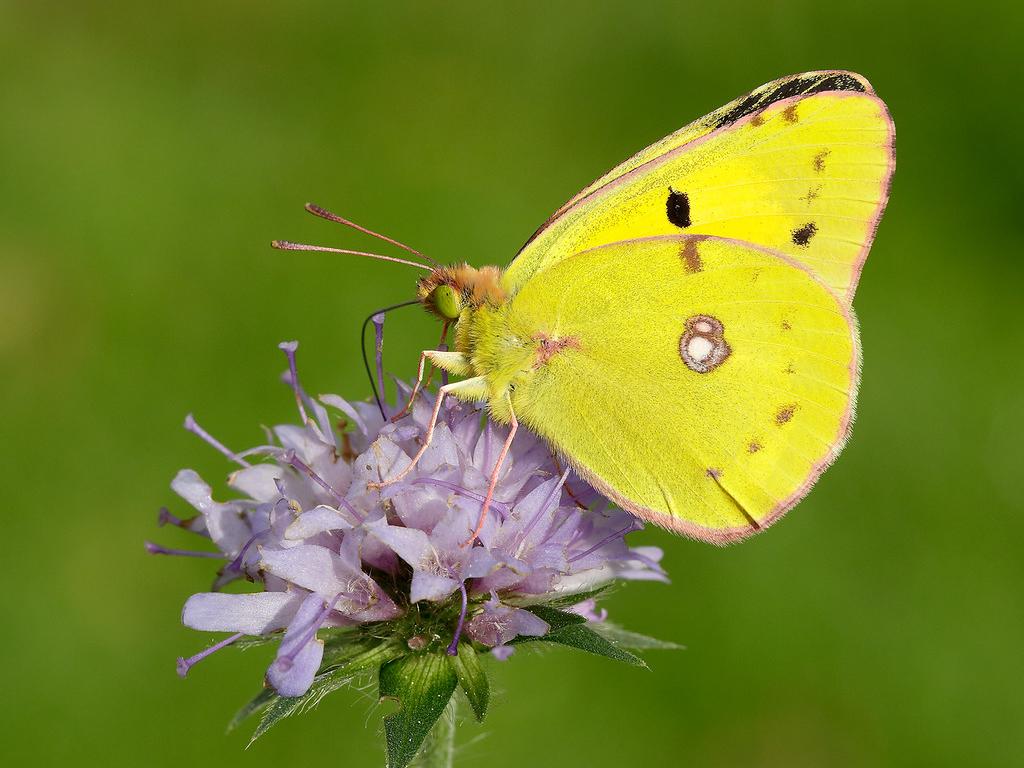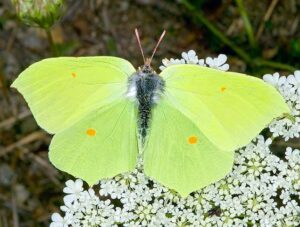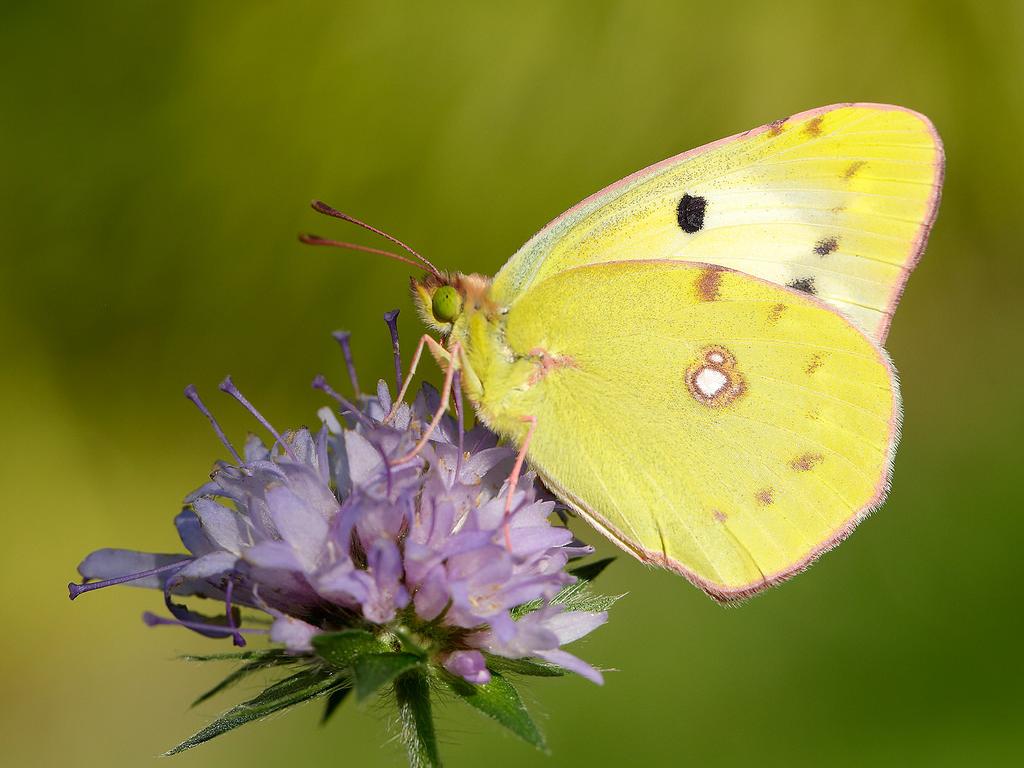
The Clouded Yellow is one of the truly migratory European butterflies and a regular visitor to Britain and Ireland. Although some of these golden-yellow butterflies are seen every year, the species is famous for occasional mass immigrations and subsequent breeding, which are fondly and long remembered as ”Clouded Yellow Years”. A small proportion of females are pale yellow (form helice), which can be confused with the rarer Pale and Berger’s Clouded Yellows.
Size and Family
- Family: Whites and yellows
- Size: Large
- Wing Span Range (male to female): 57-62mm
Habitat
Clouded Yellows may be seen in any habitat, but congregate in flowery places where the larval foodplants grow. As clovers are still commonly cultivated, the Clouded Yellow is one of the few butterfly species that have no difficulty locating breeding habitat in the modern farmed countryside. In southern England, there is a preference for unimproved chalk downland.
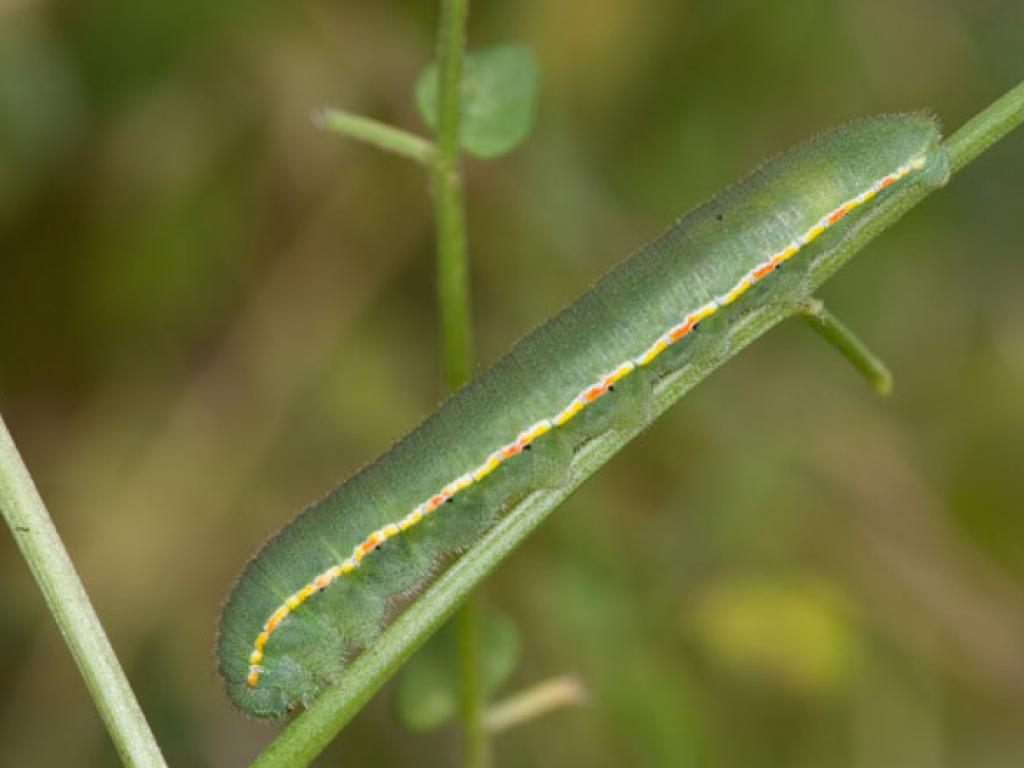
Clouded Yellow butterfly habitat
This butterfly’s native breeding habitat is round the Mediterranean, from which it migrates northward and reaches our shores. Summer breeding takes place where there is a good supply of its foodplants. Also try places with flowers on which the adults like to nectar: Vetches, Thistles, Marjoram, Knapweeds, Fleabane and Dandelion may attract them. They do visit gardens.
Life History
The Clouded Yellow has a distribution befitting a highly migratory species and can be found anywhere in the British Isles. Many immigrants remain near the coast where they feed, mate and lay their eggs. Others disperse inland and this species has been found in both Scotland and Ireland in good years. There is no elaborate courtship and, having mated, the female is subsequently able to lay an extraordinary number of eggs with up to 600 being recorded from a single female. The skittle-shaped eggs are laid singly on the upper side of leaves of the food plant. The main larval foodplants are various Clovers (Trifolium spp.) and Lucerne (Medicago sativa) but Common Bird’s-foot-trefoil (Lotus corniculatus) is also used.
The clouded yellow is a migrant that arrives here from May onwards. Usually, only small numbers turn up, but some years see mass migrations. It prefers open habitats, particularly chalk grassland.
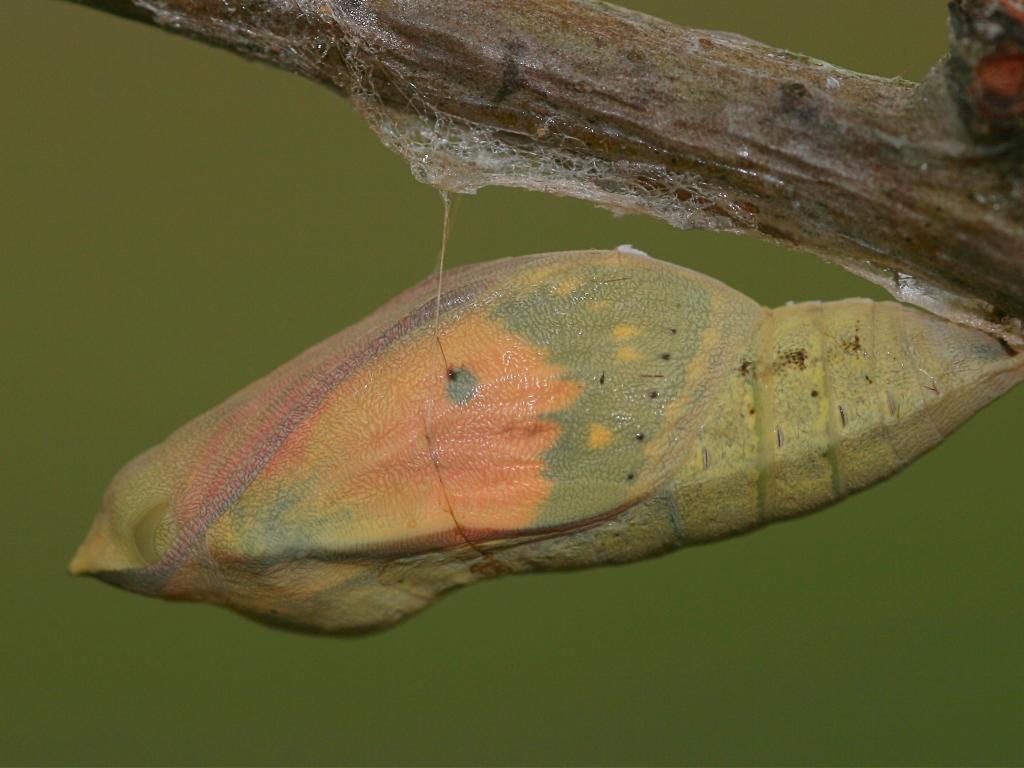
About
The clouded yellow is a medium-sized, golden-yellow butterfly. It is a migrant species that flies here from North Africa and southern Europe. Clouded yellows are appear in small numbers most years, but occasionally turn up en masse – long remembered as ‘Clouded yellow years’. Adults may arrive at any time during the spring and summer, and can be found in a variety of open habitats, although, in southern England, they are particularly fond of chalk grassland. Foodplants of the caterpillars include wild and cultivated clovers and common bird’s-foot trefoil.
How to identify
The clouded yellow has bright yellowy-orange upperwing surfaces, lined with broad, dark edges, and a yellowy-green underside. It rests with its wings closed; two silver-white spots can be seen on the hindwings in this pose.
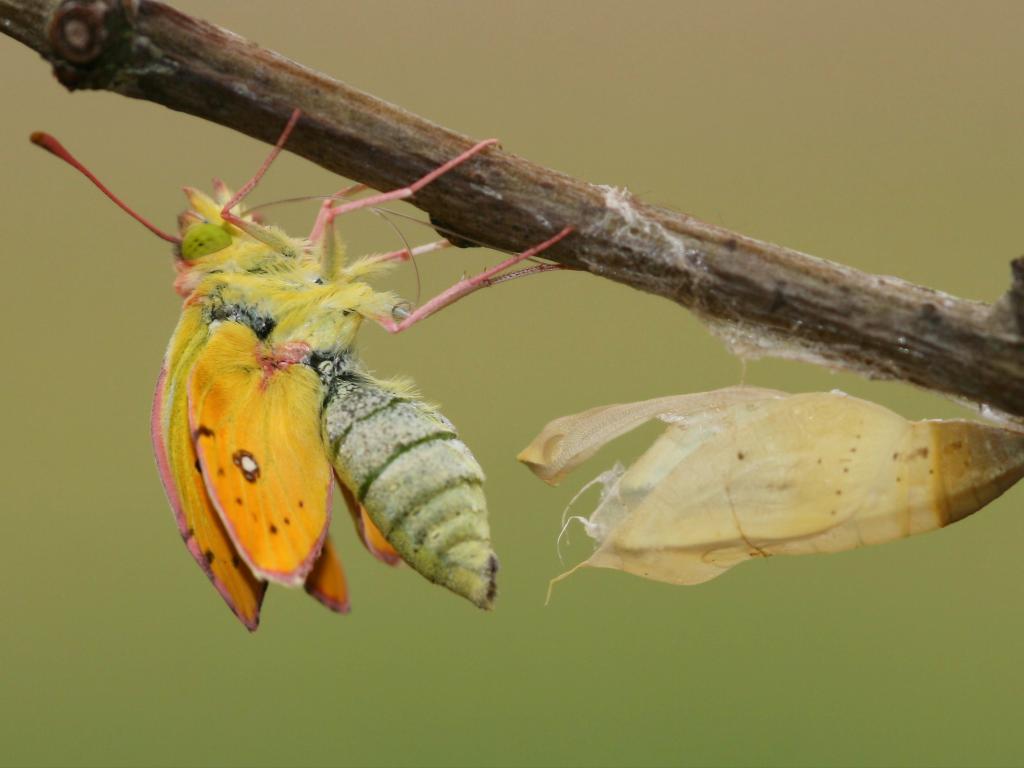
Did you know?
Clouded yellows are unable to survive winter in the UK, but they may become more common, or even residents, if temperatures rise as a result of climate change.
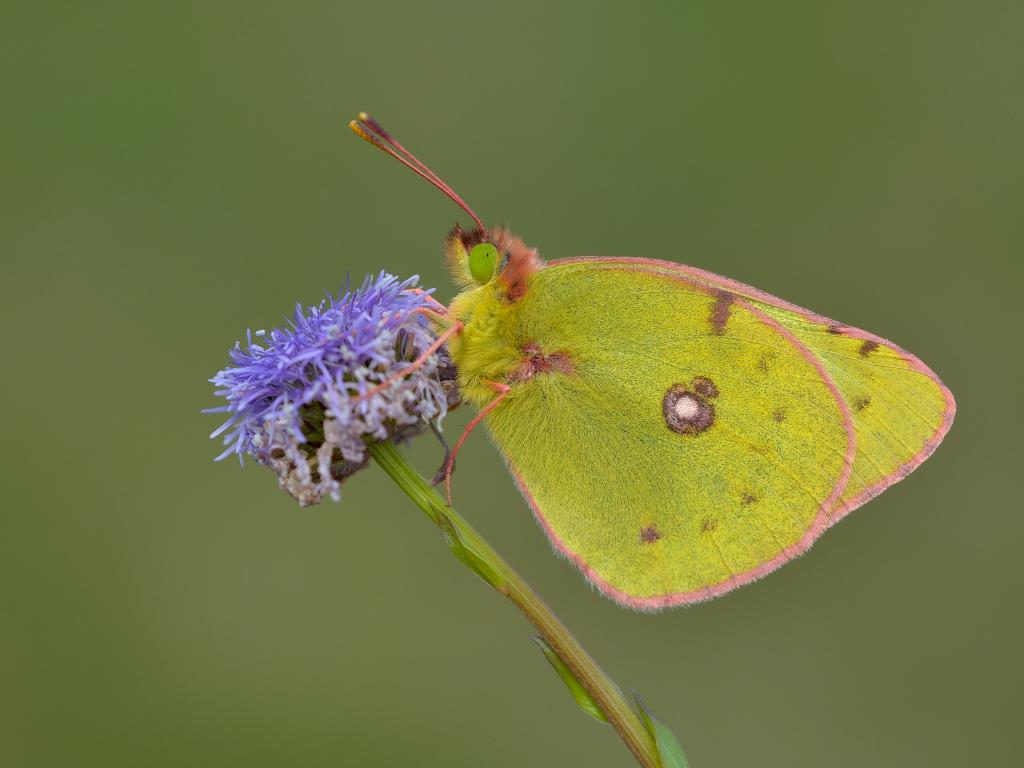
How people can help
The Wildlife Trusts manage many grassland habitats sympathetically for the benefit of all kinds of butterflies, including the clouded yellow. Careful grazing with traditional breeds, hay-cutting at the right time and scrub clearance are just some of the ways grasslands are kept in good condition – supporting invertebrates and, in turn, the larger animals that prey on them. By volunteering for your local Trust you can help too, and you’ll make new friends and learn new skills along the way.

